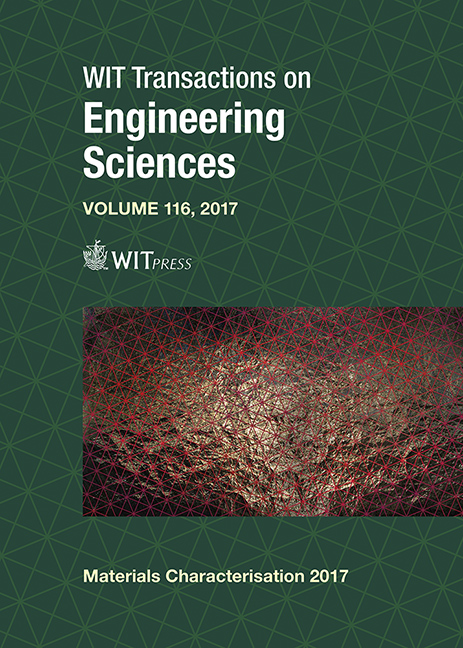EFFECT OF FINE PARTICLE PEENING USING HYDROXYAPATITE SHOT PARTICLES AND PLASMA SPRAYED HYDROXYAPATITE COATING ON FATIGUE PROPERTIES OF BETA TITANIUM ALLOY
Price
Free (open access)
Transaction
Volume
116
Pages
7
Page Range
205 - 211
Published
2017
Size
550 kb
Paper DOI
10.2495/MC170211
Copyright
WIT Press
Author(s)
YUKI NAKAMURA, TAPPEI AOKI, TOSHIHIRO SHIMIZU, SHOICHI KIKUCHI, KOICHIRO NAMBU, TOSHIKAZU AKAHORI
Abstract
Fine particle peening (FPP) and plasma spraying using hydroxyapatite particles were applied to a beta titanium alloy, Ti-22V-4Al, to form the hydroxyapatite (HAp) layer on the surface. As a result, HAp layer was formed on the specimen surface by the both treatments. The thicknesses were 5 µm and 100 µm, respectively for FPP treated and plasma sprayed specimens. In the FPP treated specimen, Vickers hardness was increased by FPP compared with that of the untreated specimens, resulting in work-hardening. Rotary bending fatigue tests were carried out on both treated and untreated specimens. The FPP treated specimens exhibited higher fatigue strength than the untreated specimens. It is due to the increase in hardness and compressive residual stress by FPP. On the other hand, significant deteriorations of the fatigue strength for the plasma sprayed specimen was observed in comparison with the result for the untreated specimen. As a result of fracture surface observation in plasma sprayed specimen, the defect formed by blasting before the plasma spraying at interface between substrate and HAp layer was observed at crack initiation site. Thus, the defect plays a role as the crack starter in the case of plasma sprayed specimen.
Keywords
fatigue, fine particle peening, plasma spray, titanium alloy, hydroxyapatite





